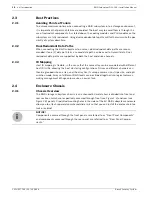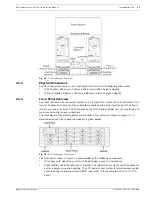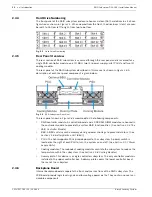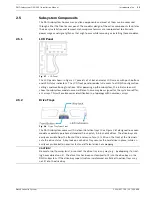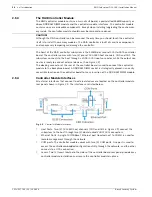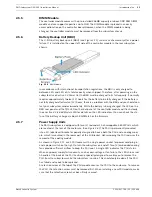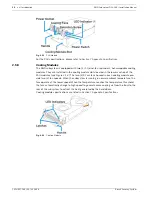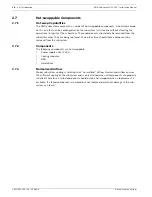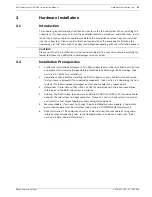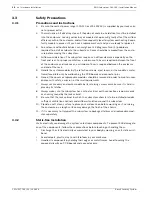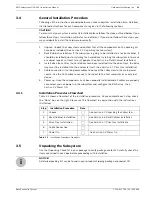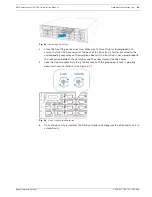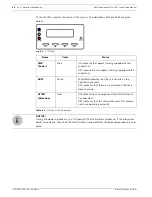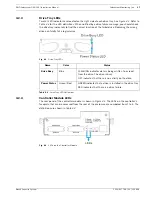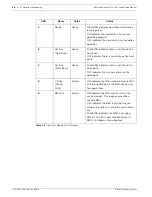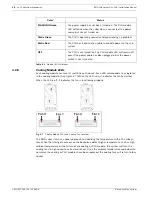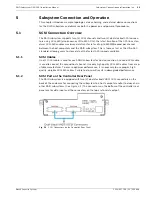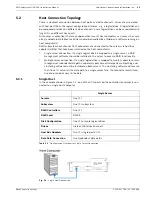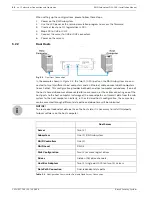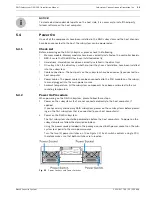
24
en | Subsystem Monitoring
RAID Subsystem DVA-16K | Installation Manual
F.01U.027.799 | V2 | 2008.08
Bosch Security System
4
Subsystem Monitoring
4.1
Subsystem Monitoring Overview
The RAID subsystem is equipped with a variety of self-monitoring features that help to keep
subsystem managers informed of the subsystem operational status. These monitoring fea-
tures provide vital feedback to help you maintain the operational integrity of the subsystem.
Prompt response to warnings and subsystem component failure notifications will improve the
overall operation of the subsystem and help ensure the longevity of the RAID subsystem.
Self-monitoring features include:
•
Firmware (FW): The controllers in the RAID subsystem come with pre-installed FW, which
can be accessed using either the LCD panel or a PC Hyper Terminal. The RAID subsystem
can be connected to a PC hyper-terminal through the COM ports. Device status informa-
tion can be obtained from the FW.
•
Bosch RAIDWatch: Bosch RAIDWatch is a fully integrated, Java-based, Graphics User
Interface (GUI) that came with the subsystem and can be used to monitor and maintain
the subsystem and the RAID controllers using your web browsers. The LAN port at the
back of each controller module enables you to use an Ethernet cable to connect to the
subsystem.
The Bosch RAIDWatch Panel View can be customized to show a direct representation of
the subsystem in the content panel of the Bosch RAIDWatch screen. Panel View allows
you to quickly determine the operational status of critical components.
•
Configuration Client: The Configuration Client is a powerful module that runs as a back-
ground Disk and Executive Monitor (DAEMON) independent from Bosch RAIDWatch that
can be installed redundantly on different hosts. It is used for event notification via email,
fax, LAN broadcast, SNMP traps, MSN Messenger, ICQ, SMS short messages, and the
configuration utility screen. The Configuration Client helps prevent blind time and keeps
you constantly informed as to the status of the storage management subsystem.
•
LEDs: Device-status-indicating LEDs are located on all active components. These LEDs
inform you of the integrity of a given component or a given link. You should become famil-
iar with the different LEDs that are present on the subsystem and be aware of their func-
tions.
•
Audible alarm: An audible alarm is present on the subsystem controller board and will be
triggered if any of a number of threatening events occur. These events usually jeopardize
the functional and operational integrity of the controller board and must be heeded at all
times. Events such as a breaching of the temperature threshold will trigger the alarm. If a
subsystem manager is present, the manager should use either the LCD panel or the PC
hyper-terminal to determine the cause of the alarm and take the appropriate corrective
measures. (See
Section 4.3 Audible Alarm
)
•
I
2
C: The I
2
C bus monitors the operational integrity of the PSUs, cooling modules, and
RAID controller board temperature.
Subsystem monitoring is a necessary part of subsystem management. If failure events or other
disruptive events are detected and reported, the subsystem managers must take the appropri-
ate action to rectify the problem. Failure to act in a properly specified manner to a system
event (like overheating) can cause severe and permanent damage to the subsystem.
Summary of Contents for DVA-16K SCSI
Page 1: ...RAID Subsystem DVA 16K DVA 16K SCSI Premium Series en Installation Manual ...
Page 2: ......
Page 71: ......

